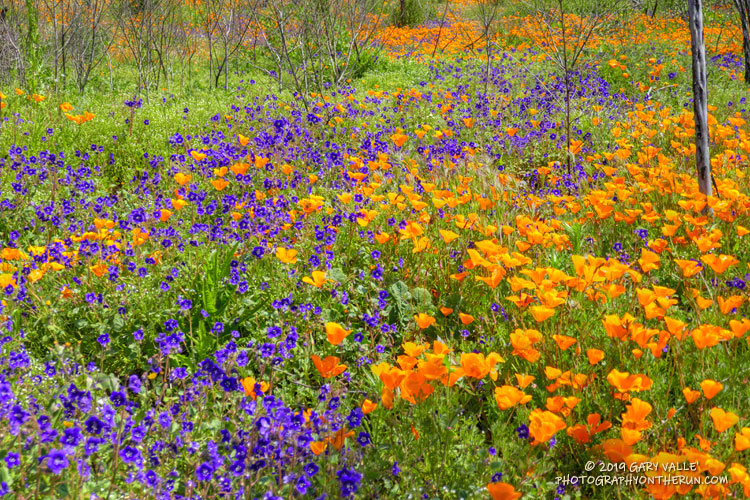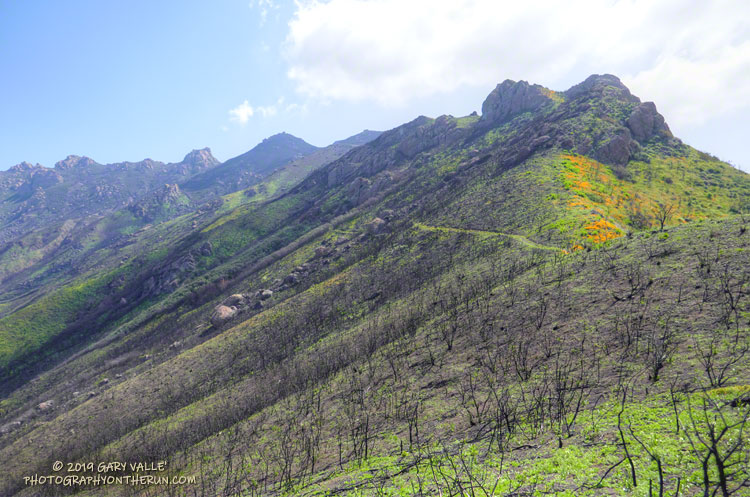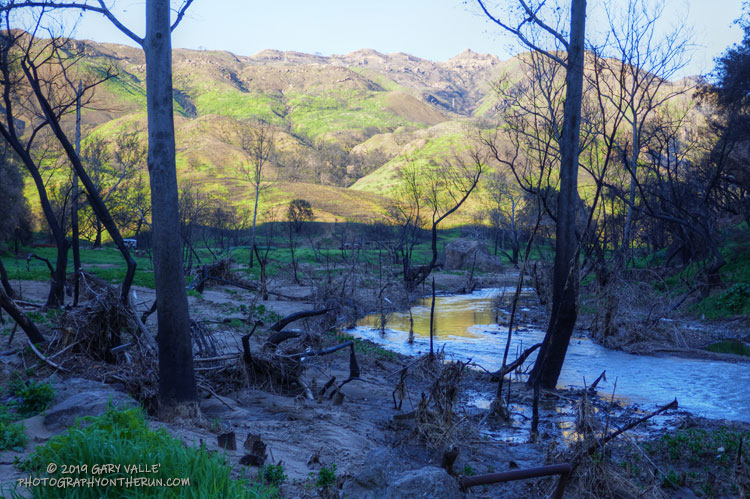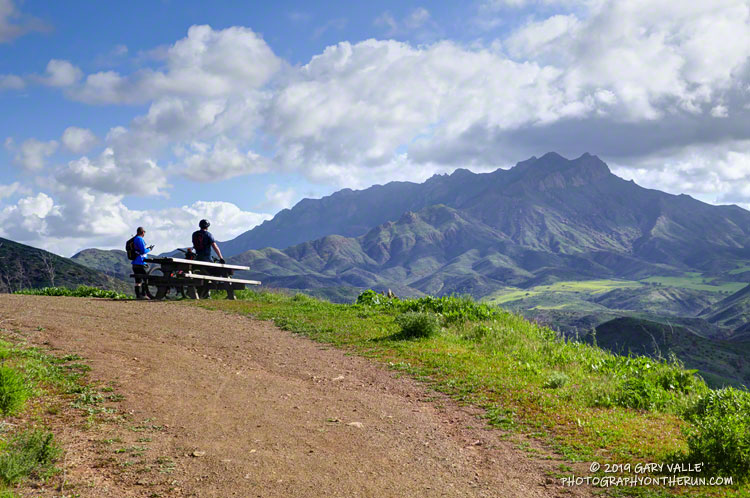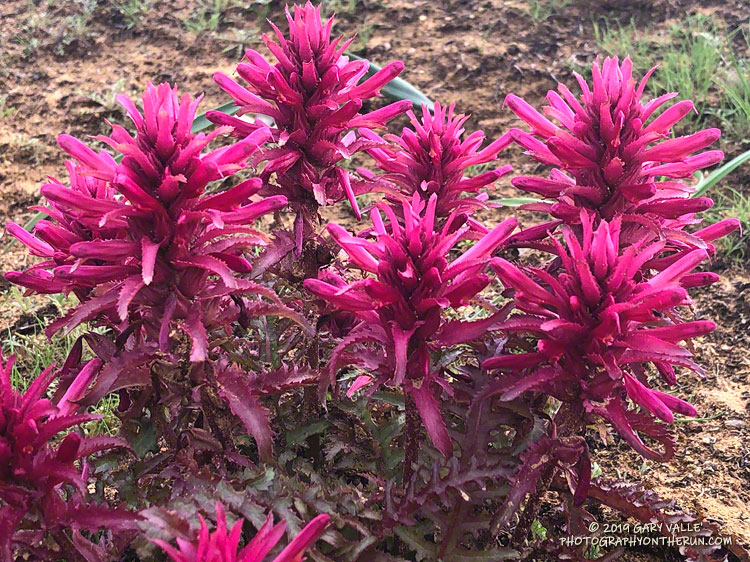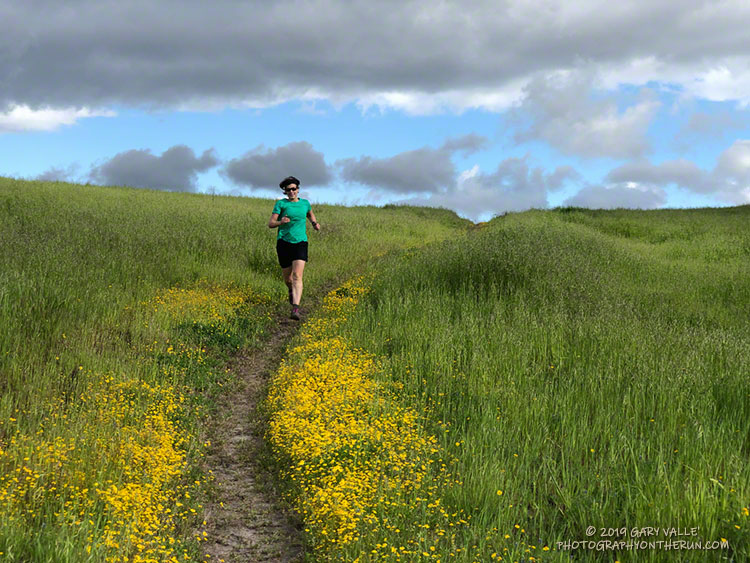
Many of my weekday runs are on the trails of Upper Las Virgenes Canyon Open Space Preserve (formerly Ahmanson Ranch).
In the wake of the Woolsey Fire and our wet rain year, the hills of Upper Las Virgenes Canyon Open Space Preserve have been covered with a dense carpet of green that has recently transitioned into a sea of mustard yellow. The grasses have now gone to seed and the hills will soon turn a summery-blond.
At first glance, just about all you see at Ahmanson Ranch is the green and yellow. But if you look closer, intermixed with the black mustard and other introduced plants are a variety of wildflowers.
In a few areas of the Preserve, there are large patches of native wildflowers, but it is more common for the native flowers to have to battle introduced plants for growing space. Some species are more successful than others.
Here is a slideshow of the wildflowers I’ve been seeing on my weekday runs, along with some comments and the date the photo was taken. Some of my weekday runs extend into Cheeseboro Canyon, so wildflowers from that area are also included. Additional photos may be added as the season progresses.
The yellow flowers along the trail on which Lynn is running are goldfields. As of April 10, there were still patches of goldfields blooming in the Lasky Mesa area.

